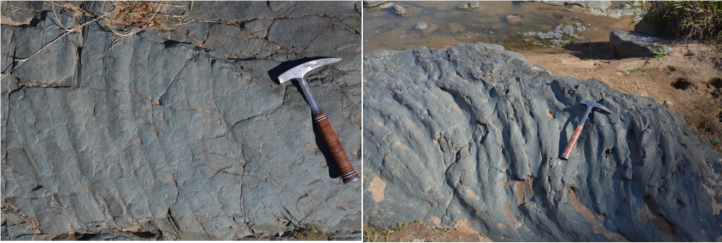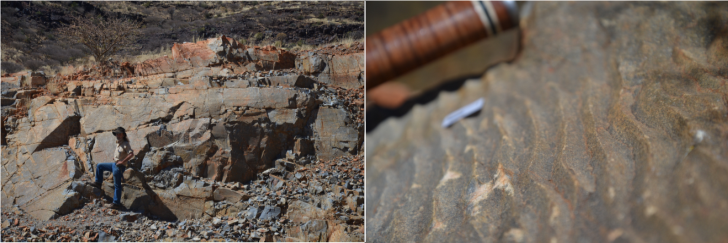 |
|
|
Fall 2017 Atmospheric pressure from rocks: a South African field campaignBy Erik Goosmann 
A common assumption is that Earth’s atmospheric pressure has stayed relatively constant at ~1 bar throughout geologic time. This assumption has been difficult to challenge because there were very few geologic processes known that effectively record atmospheric pressure in ancient rocks. Researchers in the University of Washington’s Astrobiology Program have developed and used three new methods to measure the atmospheric pressure of the ancient Earth. These studies, using ancient raindrop imprints, fluid inclusions in minerals, and lava flow gas bubble size, produced a surprise: Earth’s atmospheric pressure has not stayed constant, and could have been as much as 50%-20% lower than today’s pressure during the Archean eon 2.7 billion-years-ago (“Ga”). In August of 2017, Professor Roger Buick and I conducted a 3-week field campaign in an attempt to confirm these lower pressure results for the middle- to late-Archean. We targeted rocks from the Pongola Supergroup, a ~2.9 Ga rock succession that contains beautiful pahoehoe-topped lava flows perfect for pressure measurements, shown below in Figure 1. Using X-ray computed tomography, I will measure the gas bubble size difference between the top and bottom of the lava flows we collected, and thus be able to back-out sea level atmospheric pressure at about 2.9 Ga. I am also investigating whether wind-blown (“aeolian”) dunes could be used as records of pressure differences in the past. During our South Africa trip, Prof. Buick and I collected samples from the ~2.64 Ga Vryburg formation (see Figure 2), possibly the oldest aeolian deposit on Earth and only 100 million years younger than the low-pressure record at about 2.7 Ga. If aeolian processes measurably change with atmospheric pressure differences, aeolianites could be a new technique to add to our paleoatmospheric pressure repertoire. While a low(er) pressure during the Archean is a provocative theory, more data is needed to solidify what the exact pressure was, and how pressure evolved through time. It is my hope that the ~650 lbs of rocks I collected will provide a valuable contribution to this emerging dataset. This project was jointly-funded by the Simons Foundation Collaboration on the Origin of Life and the NASA Astrobiology Institute’s Virtual Planetary Laboratory at the University of Washington. 
Figure 1. Images of well-preserved ~2.9 billion-year-old lava flow tops. Each flow is capped with a ropey texture typical of pahoehoe lavas, a common sub-aerial lava type. 
Figure 2. Photos of the ~2.64 Ga Vryburg formation, possibly the oldest aeolian deposit on Earth. (Left) Large scale, tabular cross-beds typical of aeolian deposits, Prof. Buick for scale. (Right) Close up of extremely well-preserved aeolian ripples, white square = 2 cm. About the author: Erik Goosmann is a second-year Dual-Title Earth & Space Sciences and Astrobiology PhD student at the University of Washington. |
|
